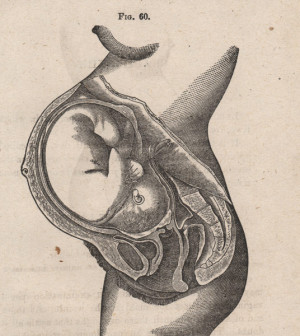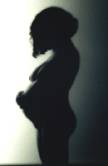- Skip Storing This Everyday Product in the Fridge Door
- Green Tea + B3 Pairing May Boost Brain Health
- Navigating Your Midlife Crisis: Embracing New Possibilities
- City Raccoons Showing Signs of Domestication
- Mapping the Exposome: Science Broadens Focus to Environmental Disease Triggers
- One Week Less on Social Media Linked to Better Mental Health
- Your Brain Changes in Stages as You Age, Study Finds
- Some Suicide Victims Show No Typical Warning Signs, Study Finds
- ByHeart Formula Faces Lawsuits After Babies Sickened With Botulism
- Switch to Vegan Diet Could Cut Your Greenhouse Gas Emissions in Half
Teen Birth Rate Has Dropped Dramatically in Last Two Decades: CDC


U.S. teen birth rates fell dramatically during the past two decades, plummeting 57 percent and saving taxpayers billions of dollars, a new government report shows.
An estimated 4 million fewer births occurred among teenagers as a result of the decline, according to researchers from the U.S. Centers for Disease Control and Prevention.
That “eye-opening” reduction in births “leapt out at me from the report,” said Bill Albert, chief program officer of The National Campaign to Prevent Teen and Unplanned Pregnancy.
“We know, for instance, that only about 40 percent of teen mothers ever graduate from high school,” Albert continued. “Translate that number — 4 million fewer births — into a much, much lower high school graduation rate, and think about the prospects for those young women in this day and age and in this economy. It’s pretty sobering.”
The researchers estimate that taxpayers saved $12 billion in 2010 alone as a result of the decline in teen births since 1991, since teen mothers are more likely to need food stamps, Medicaid and other government assistance. A child born to a teen mother costs taxpayers $1,700 a year from birth up to age 15, the CDC report said.
The decline in teen birth rates has occurred in all 50 states, with all race and ethnic groups experiencing a reduction in teenage parenthood, said report author Stephanie Ventura, a senior demographer for the CDC’s National Center for Health Statistics.
The teen birth rate is now less than one-third that of the historically highest rate, which occurred in 1957, Ventura said.
In 1957, 96.3 out of every 1,000 teenage girls had a baby, compared with 26.6 of every 1,000 teen girls in 2013.
“In the old era, most teens who had a baby were married and you could support a family on the education you had from high school, so it was not as much of a concern,” Ventura said.
But by the late 1980s, teen pregnancy began to be seen as a detriment to a young woman’s career development and her ability to contribute to a two-income family, she said.
That’s why a brief, but steep, increase in teen birth rates between 1986 and 1991 — culminating in a 61.8 per 1,000 rate of teen parenthood — created much concern among advocates of family planning, who see the recent decline as a great achievement.
“These historic declines in teen pregnancy and births truly represent one of the nation’s great success stories over the past two decades,” Albert said.
Albert chalked up the declining teen birth rate to the “magic combination of less sex and more contraception.”
Teenagers have access to and are using effective methods of contraception, Ventura said. They often will even combine two separate types of contraception, such as using a spermicidal lubricant with a condom.
But teenagers also are less likely to have sex, Albert and Ventura said.
Teenagers’ caution regarding sex might be tied to the federal government’s investment in tried-and-true sex education programs, Albert said.
Living in the era of HIV likely has created some caution as well, particularly among teenage boys. “Pregnancy was often seen as the girl’s problem,” which could lead to cavalier attitudes among boys about sex, Albert said. “HIV, not so much.”
Albert also gives credit to MTV, arguing that the network’s reality shows like “Teen Mom” and “16 and Pregnant” likely have contributed to the steep decline in recent years.
“Many teens have described these shows as far more sobering than salacious, and they are watched by millions,” he said.
Abortion has not been a factor in the decline in teen births, Ventura noted.
“Abortion hasn’t played a role because abortion rates have been falling faster than the birth rate, and the declines in abortion go back to the late 1980s,” she said.
Despite the decrease, the United States continues to have one of the highest teen birth rates among developed countries, the CDC report noted.
For example, the U.S. rate of 26.6 per 1,000 teen girls having babies is higher than that of Russia (25.2) and the United Kingdom (21.8), and far higher than rates in Denmark, Japan, the Netherlands and Switzerland, all of which have rates under 5 per 1,000 girls.
“The easiest way to explain it is we were so far out ahead of other countries [in number of teen births],” Albert said. “If you are 100 yards behind everyone else, it takes a long time to catch up to the pack. We still haven’t done that.”
More information
For more on teenage pregnancy, visit the U.S. National Institutes of Health.
Source: HealthDay
Copyright © 2025 HealthDay. All rights reserved.










